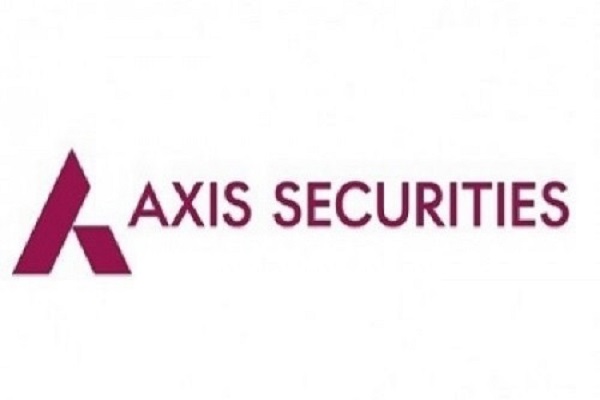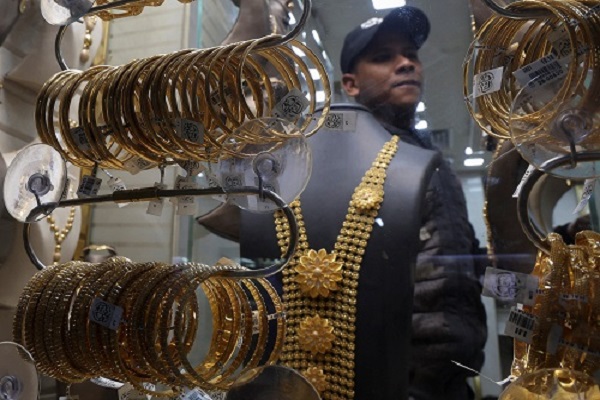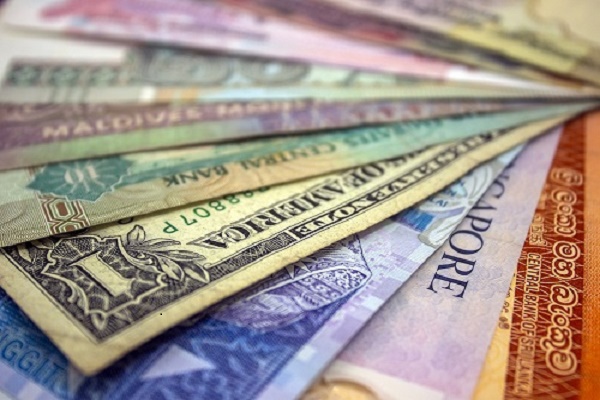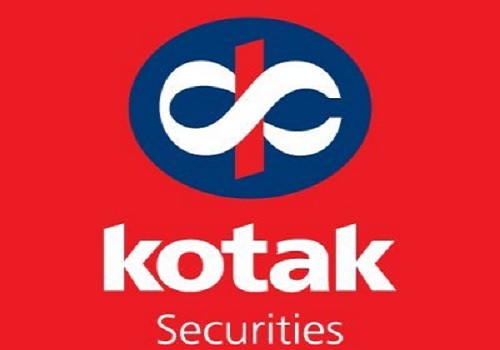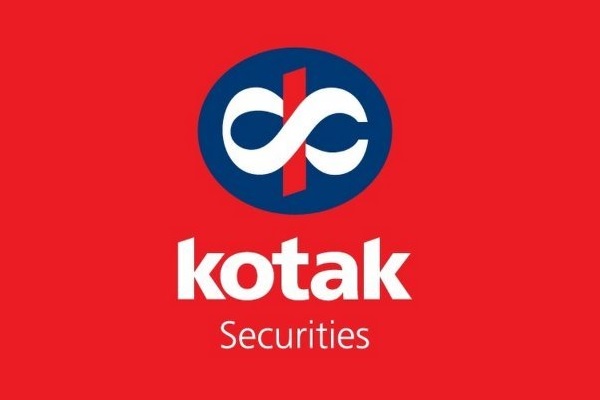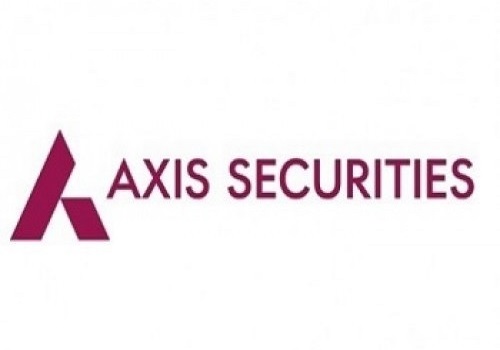Cottoncandy trading range for the day is 54200-54200 - Kedia Advisory

Gold
Gold prices edged up by 0.2% to settle at ?86,184, supported by growing concerns over U.S. trade policies and a weaker dollar, which makes bullion more attractive for foreign buyers. Additionally, U.S. economic data showing slowing business activity and declining consumer confidence further fueled gold’s appeal as a safe-haven asset. Investors are now keenly watching the PCE index, the Federal Reserve’s preferred inflation measure, for cues on the central bank’s interest rate trajectory. On the global demand front, physical gold consumption in China and India remained weak due to record-high prices. Chinese domestic gold demand showed signs of improvement in January, with the central bank purchasing gold for the third consecutive month, raising its holdings to 2,285 tonnes. Despite this, imports lagged, and ETF flows turned negative. In India, gold consumption in 2025 is expected to moderate from last year’s nine-year peak of 802.8 tonnes, mainly due to high prices affecting jewellery demand. However, investment demand remains strong, with increasing interest in gold ETFs, digital gold, and bars. Discounts on gold widened in India, reaching $35 per ounce, while in China, discounts ranged from $1-$3 per ounce. Gold exports from Switzerland to India and China plunged significantly, reflecting weak physical demand. Technically, the market remains under fresh buying, with open interest increasing by 0.83% to 16,398 as prices gained Rs.174. Immediate support is at Rs.85,875, with a downside potential to Rs.85,570. Resistance is seen at Rs.86,500, and a breakout above this level could push prices toward Rs.86,820.
Trading Ideas:
* Gold trading range for the day is 85570-86820.
* Gold gains amid growing concerns over U.S. President Trump’s tariffs plans, which could escalate global trade tensions.
* US business activity slowed and consumer confidence waned, further boosting gold’s appeal.
* Physical gold demand in China and India remained weak, as record-high prices deterred buyers.
Silver
Silver prices declined by 1.15% to settle at Rs.95,089, driven by profit booking after a recent rally. Concerns over U.S. trade policies, particularly fresh tariff announcements by former President Donald Trump, weighed on sentiment. New duties on lumber, forest products, cars, semiconductors, and pharmaceuticals, coupled with existing tariffs on Chinese imports and metals, have heightened inflationary fears. Investors are also closely monitoring the Federal Reserve’s stance on interest rates, as officials express caution about premature cuts due to persistent inflation. While some Fed members acknowledge the need for rate cuts later in the year, others highlight the risks of stagflation and inflationary pressures, which have contributed to silver’s volatility. On the demand side, the silver market is projected to remain in a deficit for the fifth consecutive year in 2025. Total demand is expected to remain steady at 1.20 billion ounces, supported by strong industrial usage and retail investment. Industrial fabrication is forecasted to grow by 3%, surpassing 700 million ounces for the first time, with green energy applications continuing to drive demand. Silver mine production is set to rise by 2% to 844 million ounces, reaching a seven-year high, while recycling is projected to increase by 5%. Technically, the silver market is under long liquidation, with open interest dropping by 12.02% to 14,637 as prices fell by Rs.1,111. Immediate support is at Rs.94,410, with a potential test of Rs.93,735. Resistance is at Rs.96,095, and a breakout above this level could push prices toward Rs.97,105.
Trading Ideas:
* Silver trading range for the day is 93735-97105.
* Silver dropped on profit booking after prices rose amid concerns about U.S. President Trump's tariff plans.
* Market participants are monitoring the Fed’s interest rate trajectory due to Trump's perceived inflationary policies.
* Fed officials are wary of future interest rate cuts due to persistent inflation.
Crude oil
Crude oil prices remained mostly stable, settling at Rs.6,150, with a marginal increase of 0.03%. The market is reacting to expectations of resumed crude exports from Iraq’s Kurdistan region, following the Iraqi oil ministry’s announcement that all necessary procedures have been completed to restart shipments through the Iraq-Turkey pipeline. Additionally, traders are closely watching developments in the Russia-Ukraine peace talks, as any progress could lead to the lifting of sanctions on Russian oil, further increasing supply in the market. On the inventory front, U.S. crude oil stocks rose by 4.633 million barrels in the week ending February 14, 2025, surpassing market expectations of a 3 million-barrel increase. Meanwhile, crude stocks at the Cushing, Oklahoma hub also climbed by 1.472 million barrels, marking the largest rise since May 2024. However, gasoline stocks saw a slight decline of 0.151 million barrels, while distillate inventories dropped significantly by 2.051 million barrels, exceeding the anticipated 1.2 million-barrel decrease. Looking ahead, the EIA has revised its crude oil production forecast for 2025, projecting output to average 13.59 million barrels per day, slightly higher than previous estimates. Brent crude prices are expected to average $74 per barrel in 2025 before declining to around $66 in 2026. Technically, the market is witnessing short covering, as open interest fell by 5.69% to 3,633 contracts. Crude oil is currently supported at Rs.6,107, with a potential test at Rs.6,064. On the upside, resistance is seen at Rs.6,177, with a breakout possibly pushing prices toward Rs.6,204.
Trading Ideas:
* Crudeoil trading range for the day is 6064-6204.
* Crude oil settled flat amid expectations of resumed exports from Kurdistan’s oilfields.
* Iraq will receive 185,000 bpd from Kurdistan once oil shipments start.
* Money managers cut their net long U.S. crude futures and options positions – CFTC
Natural Gas
Natural gas prices declined sharply by 4.55%, settling at Rs.346.4 as forecasts for milder weather and lower heating demand weighed on market sentiment. The easing of freeze-offs, which had disrupted output during extreme cold, has allowed production to recover. Average gas output in the Lower 48 U.S. states has risen to 104.5 billion cubic feet per day (bcfd) in February, up from 102.7 bcfd in January, nearing the record high of 104.6 bcfd set in December 2023. Additionally, gas flows to U.S. LNG export plants have increased to 15.5 bcfd in February, up from 14.6 bcfd in January, with daily feedgas hitting a record 16.5 bcfd, fueled by increased flows to the Plaquemines LNG plant in Louisiana. Meanwhile, U.S. utilities withdrew 196 billion cubic feet (bcf) of natural gas from storage in the week ending February 14, 2025, exceeding market expectations of 188 bcf. The largest withdrawals were observed in the Midwest (-65 bcf), South Central (-54 bcf), and East (-39 bcf) regions. Storage levels are now 15.5% lower than a year ago and 5.3% below the five-year average, highlighting tighter supplies. The U.S. Energy Information Administration (EIA) projects that natural gas production and demand will hit record highs in 2025, with output rising to 104.6 bcfd and LNG exports reaching 14.0 bcfd. Technically, the market remains under long liquidation, with open interest dropping by 11.87% to 14,391 contracts. Natural gas is finding support at Rs.339.2, with a potential test at Rs.331.9. On the upside, resistance is seen at Rs.351.2, with a move above potentially pushing prices toward Rs.355.9.
Trading Ideas:
* Naturalgas trading range for the day is 331.9-355.9.
* Natural gas fell dragged down by forecasts of milder weather and lower heating demand next week than previously anticipated.
* Freeze-offs, which disrupt output during extreme cold, are beginning to subside, supporting a recovery in production.
* Average gas output in the Lower 48 U.S. states has risen to 104.5 bcfd so far in February, from 102.7 bcfd in January.
Copper
Copper prices declined by 0.49% to settle at Rs.861.3, pressured by concerns over weakening metal demand following U.S. President Donald Trump’s threats to impose tariffs on cars and semiconductor chips. Market sentiment remains cautious as investors look toward China’s National People's Congress meeting in March for potential stimulus measures to counteract trade uncertainties and sluggish demand. Additionally, copper inventories in Shanghai Futures Exchange-monitored warehouses rose 12.9% from last week, signaling a possible supply buildup. On the global front, the refined copper market posted a deficit of 22,000 metric tons in December, narrowing from a 124,000 metric ton shortfall in November, according to the International Copper Study Group (ICSG). However, for the full year, the market showed a surplus of 301,000 metric tons compared to a 52,000 metric ton deficit in the previous year, reflecting improved supply conditions. Meanwhile, Peru’s copper production in 2024 was recorded at 2,736,150 metric tons, down 0.7% from the previous year, marking the first decline after four years of recovery. The country’s output is expected to remain stable at around 2.8 million metric tons in both 2024 and 2025 due to declining ore grades and a lack of new projects. Technically, copper is under long liquidation as open interest fell significantly by 35.1% to 1,407 contracts. The metal is finding support at Rs.856.8, with a further decline possibly testing Rs.852.3. On the upside, resistance is observed at Rs.867.3, with a break above potentially driving prices toward Rs.873.3.
Trading Ideas:
* Copper trading range for the day is 852.3-873.3.
* Copper eased after U.S. President Donald Trump threatened to impose tariffs on cars and semiconductors chips.
* Shanghai warehouse copper stocks up 12.9%
* China's central bank vowed to provide strong financial support for the healthy development of private economy.
Zinc
Zinc prices declined by 1.58% to settle at Rs.267.55, pressured by rising inventories and concerns over global demand. Shanghai Futures Exchange-monitored zinc stocks increased by 26.3% from the previous week, indicating ample supply. Meanwhile, China’s People's Bank of China (PBoC) signaled potential monetary policy adjustments to support the economy amid external pressures, weak domestic demand, and broader financial risks. Despite new bank loans surging to a record high in January, traders remained cautious about the impact of U.S. President Donald Trump’s tariff threats. However, his indication of a possible new trade deal with China introduced some optimism for improved trade relations. On the supply side, global mined zinc production fell for the third consecutive year in 2024, in line with a 7% decline in refined zinc production in China. The Red Dog Mine in Alaska, responsible for 10% of global output, is also set to slow in 2025 as its ore reserves deplete. The International Lead and Zinc Study Group (ILZSG) reported that the global zinc market moved into a deficit of 62,000 metric tons in 2024, a stark shift from the 310,000-ton surplus in 2023, primarily due to reduced production. Chinese imports of zinc contained in concentrates fell by 13.1%, while refined zinc net imports increased by 15.5%. Technically, the market remains under long liquidation as open interest fell sharply by 25.36% to 1,024 contracts. Zinc is finding support at Rs.265.8, with a drop below this level potentially testing Rs.264.1. On the upside, resistance is expected at Rs.270.5, and a breakout could push prices toward Rs.273.5.
Trading Ideas:
* Zinc trading range for the day is 264.1-273.5.
* Zinc dropped as Zinc inventories in warehouses monitored by SHFE rose 26.3 % from last Friday
* The global zinc market swung to a deficit of 62,000 metric tons in 2024 from a surplus of 310,000 tons the year - ILZSG
* Inventories held by LME and SHFE warehouses decreased by 31,000 tons to 791,000 tons in total - ILZSG
Aluminium
Aluminium prices fell by 0.85% to settle at Rs.262.1, pressured by rising inventories and ongoing production increases in China. The Shanghai Futures Exchange reported a 17.5% rise in aluminium stockpiles, reflecting a post-holiday inventory buildup. However, the downside remained limited due to the EU's agreement to ban Russian primary aluminium imports and the U.S. threat to impose a 25% tariff on imports. China's aluminium production hit a record 44 million metric tons in 2024, but output is expected to slow as Beijing enforces production caps to manage supply and meet carbon emission targets. Despite fiscal stimulus measures and credit growth improvements, aluminium production in China resumed, with operating capacity expected to rise in February. Meanwhile, the U.S. aluminium premium over the London Metal Exchange benchmark surged by 25% since February 7 and 60% since Donald Trump’s re-election in November 2024, reflecting heightened market concerns over trade restrictions. Global aluminium output rose by 2.7% year-on-year to 6.252 million tonnes in January, according to the International Aluminium Institute (IAI). China’s exports of unwrought aluminium and aluminium products surged 17% in the first ten months of 2024, driven by strong overseas demand. However, higher costs led to industry-wide losses for the first time in three years, with Chinese producers experiencing average losses of 687 yuan per ton. Technically, the market is under long liquidation, with open interest dropping by 21.01% to 1,098 contracts. Aluminium has support at Rs.260.9, with a break below possibly testing Rs.259.6. On the upside, resistance is at Rs.264.1, and a move above could lead to Rs.266.
Trading Ideas:
* Aluminium trading range for the day is 259.6-266.
* Aluminium dropped as inventories in warehouses monitored by the Shanghai Futures Exchange rose 17.5%.
* However downside seen limited as EU envoys' agreement to ban Russian primary aluminium imports in a fresh sanctions package.
* Global primary aluminium output in January rose 2.7% year on year to 6.252 million tonnes - IAI
Cottoncandy
Cottoncandy prices declined by 0.4% to settle at Rs.54,200, influenced by strong supply projections from Brazil and higher procurement by the Cotton Corporation of India (CCI). Brazil’s 2024-25 cotton production is expected to rise by 1.6% to 3.7616 million tons, with a 4.8% increase in planted area, reinforcing global supply strength. Meanwhile, CCI is set to procure over 100 lakh bales at the Minimum Support Price (MSP) this season, supporting domestic cotton prices. The Cotton Association of India (CAI) has estimated that India’s cotton production for the 2024-25 season will decline to 301.75 lakh bales from 327.45 lakh bales in the previous season due to lower yields in Gujarat, Punjab, and Haryana. By the end of January 2025, total cotton supply is projected at 234.26 lakh bales, including fresh pressings of 188.07 lakh bales, imports of 16 lakh bales, and an opening stock of 30.19 lakh bales. Consumption during this period stood at 114 lakh bales, while exports were recorded at 8 lakh bales. The season's total exports are forecasted to drop to 17 lakh bales from 28.36 lakh bales last season. In the global market, the U.S. cotton balance sheet saw minimal changes, with domestic mill use declining slightly, raising ending stocks. Technically, the market is under long liquidation, with open interest unchanged at 253 while prices declined by Rs.220. Immediate support for Cottoncandy is at Rs.54,200, with further downside possible towards the same level. Resistance is seen at Rs.54,200, and a move above this level could push prices higher.
Trading Ideas:
* Cottoncandy trading range for the day is 54200-54200.
* Cotton dropped as Brazil’s 2024-25 cotton production is projected to be 1.6% higher at 3.7616 million tons.
* CAI said the overall cotton output is estimated to dip to 301.75 lakh bales due to lower yield in Gujarat.
* CCI is likely to buy more than 100 lakh bales of cotton at MSP during the current cotton year.
* In Rajkot, a major spot market, the price ended at 25605.15 Rupees dropped by -0.1 percent.
Turmeric
Turmeric prices dropped significantly by 4.39% to settle at 12,544 as new crop arrivals began in key markets like Nizamabad and Hingoli. The area under turmeric cultivation has increased by 10% to 3.30 lakh hectares this season, compared to 3 lakh hectares last year. However, untimely rains have impacted productivity, preventing a proportional rise in production. Despite an increase in sown area, yields are expected to decline by 10-15% in regions like Nanded due to small rhizomes and crop rots. As a result, overall production may remain close to last year’s 10.75 lakh tonnes or fluctuate within a 3-5% range. On the export front, turmeric shipments increased by 9.8% between April and November 2024, reaching 121,601.21 tonnes compared to 110,745.34 tonnes in the same period last year. However, November 2024 exports declined by 20.18% from October, although they were still up 48.22% year-on-year. Imports surged by 101.8% in the April-November period to 18,937.95 tonnes, though they saw a 34.84% month-on-month decline in November. Technically, the market remains under fresh selling pressure, with open interest rising by 2.13% to 12,230 contracts. Prices fell sharply by Rs.576, signaling bearish sentiment. Immediate support is at 12,268, and a further decline could test 11,992 levels. On the upside, resistance is seen at 12,920, with a breakout potentially pushing prices to 13,296.
Trading Ideas:
* Turmeric trading range for the day is 11992-13296.
* Turmeric dropped as arrival of new turmeric crop has started.
* However downside seen limited as new crop yields are expected to be 10-15% lower this year.
* Turmeric area was recorded as 3.30 lakh hectares, which is 10 percent more than the area of about 3 lakh hectares.
* In Nizamabad, a major spot market, the price ended at 12849.9 Rupees dropped by -1.71 percent.
Jeera
Jeera prices declined by 1.07% to settle at ?20,765 due to weak demand, as existing stock levels are sufficient to meet the current export business. The downside, however, remains limited as the new crop in Gujarat has been delayed by about a month due to unfavorable weather conditions. Sowing in key producing states like Gujarat and Rajasthan was also delayed, though production is expected to be similar to last year. Currently, farmers hold around 20 lakh bags of cumin, with only 3-4 lakh bags anticipated to be traded by the season's end, leaving a carry-forward stock of approximately 16 lakh bags. India's cumin production increased significantly to 8.6 lakh tonnes in 2023-24 from 5.77 lakh tonnes the previous year, supported by an expanded cultivation area. Despite higher output, India remains the most competitive exporter, with cumin prices at $3,050 per tonne - $200 to $250 cheaper than Chinese cumin. This price advantage is expected to attract strong buying interest from countries like China, supporting the market. Additionally, tensions in the Middle East over the last two months have boosted export demand, particularly from Gujarat, with increased buying from Europe and other markets ahead of festive seasons. Technically, the market is under long liquidation, as open interest dropped by 0.76% to 2,754 contracts while prices fell Rs.225. Immediate support is at Rs.20,500, with further downside potential to Rs.20,240. On the upside, resistance is seen at Rs.21,050, with a breakout possibly pushing prices to Rs.21,340.
Trading Ideas:
* Jeera trading range for the day is 20240-21340.
* Jeera dropped as demand is low and the current export business is being met from the available stock.
* However downside seen limited as the start of the new crop of cumin in Gujarat has been delayed by about a month.
* Jeera exports during Apr-Nov 2024, rose by 74.04 percent to 147,006.20 tonnes compared to 84,467.16 tonnes during Apr-Nov 2023.
* In Unjha, a major spot market, the price ended at 20750.05 Rupees dropped by -0.61 percent.
Views express by all participants are for information & academic purpose only. Kindly read disclaimer before referring below views

